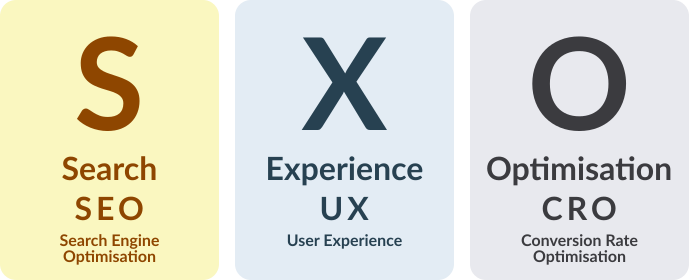In today’s digital landscape, simply ranking high on search engines isn’t enough. Users expect seamless, engaging, and personalized experiences when they interact with your website. This is where Search Experience Optimization (SXO) comes into play—a powerful strategy that blends SEO (Search Engine Optimization) and UX (User Experience) to maximize conversions, engagement, and satisfaction.
What is Search Experience Optimization (SXO)?
SXO goes beyond traditional SEO by focusing not just on driving traffic but also on enhancing the user journey from the moment someone clicks on your search result to the point of conversion. It combines:

- Technical SEO (crawling, indexing, site speed)
- Content Optimization (relevant, valuable, and engaging content)
- User Experience (UX) (intuitive navigation, fast load times, mobile-friendliness)
- Conversion Rate Optimization (CRO) (clear CTAs, persuasive design)
The goal? Higher rankings, better engagement, and more conversions.
Why SXO Matters More Than Ever
1. Search Engines Are Smarter
Google’s algorithms, especially with updates like BERT and Helpful Content, now prioritize user intent and experience over keyword stuffing or backlink numbers. If your site doesn’t provide value and usability, your rankings will suffer.
2. Users Have Higher Expectations
Modern internet users are impatient. If your site is slow, confusing, or irrelevant, they’ll bounce—straight into the arms of your competitors. SXO ensures that once a user clicks, they stay, explore, and eventually convert.
3. Conversion is the Ultimate Goal
High traffic is great, but meaningless if visitors aren’t turning into customers. SXO focuses on streamlining the journey from search to action, increasing the likelihood of leads, sales, or sign-ups.
Key Elements of a Strong SXO Strategy
1. Optimize for Search Intent
- Understand what users are looking for (informational, navigational, commercial, or transactional queries).
- Align content with user expectations—answer questions clearly and concisely.
2. Enhance On-Page UX
- Fast-loading pages (Google favors speed).
- Mobile-first design (over 60% of searches happen on mobile).
- Readable content (short paragraphs, bullet points, multimedia).
- Clear CTAs (guide users toward the next step).
3. Leverage Visual & Interactive Content
- Use videos, infographics, and interactive tools to boost engagement.
- Optimize images with alt text and proper compression for SEO.
4. Improve Internal Linking & Navigation
- Help users (and search engines) discover more content.
- Use descriptive anchor text for better context.
5. Monitor & Optimize Performance
- Track Core Web Vitals (loading, interactivity, visual stability).
- Analyze user behavior (heatmaps, session recordings).
- A/B test different layouts and CTAs for better conversions.
The Future of SXO: AI & Personalization
With AI-driven search (like Google’s SGE – Search Generative Experience), SXO will evolve to include:
- Hyper-personalized content based on user behavior.
- Voice search optimization (natural language queries).
- Zero-click search strategies (providing answers directly in SERPs).
How to Implement SXO: A Simple Roadmap
- Start with SEO – Ensure technical SEO, keyword research, and on-page optimization are in place.
- Audit the UX – Use tools like Hotjar or Google Analytics to study user behavior.
- Improve Navigation – Simplify menus and improve internal linking.
- Enhance Content – Make it more visual, interactive, and focused on user needs.
- Test & Optimize – Run A/B tests, gather feedback, and continually refine.
Final Thoughts
SXO is the next evolution of SEO, where user satisfaction and search performance go hand in hand. By focusing on both discoverability and experience, businesses can drive more qualified traffic, improve engagement, and boost conversions.
Is your website optimized for Search Experience Optimization? If not, now’s the time to start!

